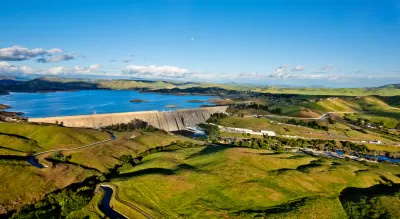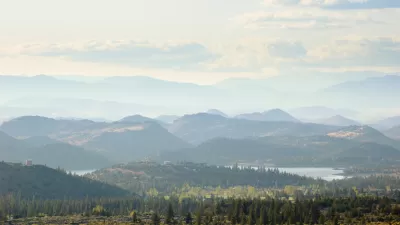The Temperance Flat Reservoir Project might be falling too far behind schedule to maintain a huge chunk of state funding, according to reports.

The more than $171 million the Temperance Flat Reservoir Project received in 2018 from the state of California's Water Storage Investment Program came with a few strings attached. On January 22, the project would be required to have "completed feasibility studies, a draft version of the environmental documents released for public review, and commitments for at least 75% of non-program funding," according to an article by Chris Austin (commonly known as Maven).
"Each quarter, applicants submit a report informing the Commission of project status as it relates to the Prop 1 requirements. In recent quarterly reports, the Temperance Flat Reservoir Authority has indicated that it is evaluating its ability to achieve the prescribed schedule," reports Maven.
The entire project will require more than $3 billion to essentially add a dam to an existing reservoir—Millerton Lake, which is created by Friant Dam on the San Joaquin River. "The basic facility would be a new dam in Millerton Lake and a new powerhouse that would generate hydropower as water is released from Temperance Flat into Millerton Lake, essentially impounding water upstream to the downstream face of Kerckhoff Dam, a PG&E power facility," according to Maven. The project would provide a total of 1.8 million acre-feet of water storage capacity when combined with Millerton Lake.
In typical Maven style, the article provides nearly comprehensive detail of the planning and construction details of the project, as well as a path forward for the project to stay on schedule.
FULL STORY: Water Storage Investment Program: Temperance Flat Reservoir Project Status Update

Maui's Vacation Rental Debate Turns Ugly
Verbal attacks, misinformation campaigns and fistfights plague a high-stakes debate to convert thousands of vacation rentals into long-term housing.

Planetizen Federal Action Tracker
A weekly monitor of how Trump’s orders and actions are impacting planners and planning in America.

Chicago’s Ghost Rails
Just beneath the surface of the modern city lie the remnants of its expansive early 20th-century streetcar system.

Bend, Oregon Zoning Reforms Prioritize Small-Scale Housing
The city altered its zoning code to allow multi-family housing and eliminated parking mandates citywide.

Amtrak Cutting Jobs, Funding to High-Speed Rail
The agency plans to cut 10 percent of its workforce and has confirmed it will not fund new high-speed rail projects.

LA Denies Basic Services to Unhoused Residents
The city has repeatedly failed to respond to requests for trash pickup at encampment sites, and eliminated a program that provided mobile showers and toilets.
Urban Design for Planners 1: Software Tools
This six-course series explores essential urban design concepts using open source software and equips planners with the tools they need to participate fully in the urban design process.
Planning for Universal Design
Learn the tools for implementing Universal Design in planning regulations.
planning NEXT
Appalachian Highlands Housing Partners
Mpact (founded as Rail~Volution)
City of Camden Redevelopment Agency
City of Astoria
City of Portland
City of Laramie




























